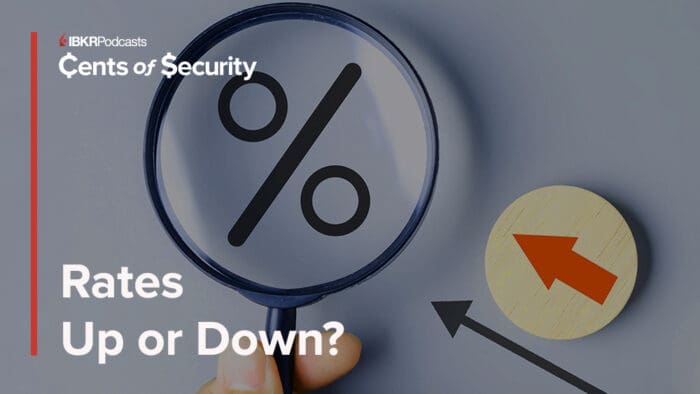What is a market cap-weighted index?
Indexes constructed to measure the characteristics and performance of specific markets or asset classes are typically market cap-weighted, meaning the index constituents are weighted according to the total market cap or market value of their available outstanding shares.
In market cap-weighted indexes, a company’s representation within the index is based on its market value, and its performance contributes to the performance of the overall index proportionately.
In other words, the company with the largest market cap will represent the largest weight in the index, meaning mega cap companies will impact the performance of the overall index more than a small cap company will.
This method of weighting index constituents remains the most commonly used today. Despite the development of hundreds of alternatively-weighted indexes in recent years, market capweighted indexes remain relevant—as they reflect the primary characteristics of markets and so are used to understand fundamental changes in markets and market segments.
What does it mean for an index to be float adjusted?
There are a number of non-cap-weighted index construction approaches that complement traditional market cap-weighted indexes.
In alternatively-weighted indexes, constituent weights are determined independently of market value. These indexes are designed to target specific objectives such as reducing risk or improving diversification. Alternative weighting mechanisms include equally weighting index constituents and basing weights on fundamental criteria such as:
- revenue
- cash dividend rates
- book value
What are factor indexes?
Academic research has long maintained that stock relative performance can largely be explained by several common characteristics such as:
- size
- value
- price momentum
- quality
- volatility
Factor indexes are non-cap-weighted indexes that are designed to capture the performance of these characteristics. These indexes are intended to offer more focused exposures to factors than their market cap-weighted counterparts.
A factor index sets out to capture factor exposures in a controlled and considered way. Single factor indexes and factor combination indexes, which can be tailored depending on the desired exposures, are common solutions used by investors.
What are thematic indexes?
A thematic index is designed to follow a generally-accepted investment theme rather than a particular country, sector, or market segment. An example is an index comprised of companies listed in developed markets such as the UK and US that derive significant revenue from emerging markets.
The purpose of this investment strategy would be to gain exposure to emerging markets without directly purchasing stocks issued by companies listed in emerging market countries, hence avoiding the country and currency risks and higher trading costs associated with some emerging markets investments.
What is an index value?
Differences in how index values are calculated can occur depending on the index weighting scheme. For the sake of simplicity, we will explain the calculation of market cap-weighted index values.
As prices and market values of the stocks within an index rise and fall, the index reflects this movement using a series of index values. Index values are calculated and published daily after the market closes, and in some cases they are calculated in real time. The change in an index’s value from one point in time to the next represents the performance of the index (i.e., the performance of the market/segment it is designed to measure).
FTSE Russell Indexes
Disclosure: FTSE Russell
Interactive Advisors, a division of Interactive Brokers Group, offers FTSE Russell Index Tracker portfolios on its online investing marketplace. Learn more about the Diversified Portfolios.
This material is not intended as investment advice. Interactive Advisors or portfolio managers on its marketplace may hold long or short positions in the companies mentioned through stocks, options or other securities.
© 2023 London Stock Exchange Group plc and its applicable group undertakings (the “LSE Group”). The LSE Group includes (1) FTSE International Limited (“FTSE”), (2) Frank Russell Company (“Russell”), (3) FTSE Global Debt Capital Markets Inc. and FTSE Global Debt Capital Markets Limited (together, “FTSE Canada”), (4) MTSNext Limited (“MTSNext”), (5) Mergent, Inc. (“Mergent”), (6) FTSE Fixed Income LLC (“FTSE FI”), (7) The Yield Book Inc (“YB”) and (8) Beyond Ratings S.A.S. (“BR”). All rights reserved.
FTSE Russell® is a trading name of FTSE, Russell, FTSE Canada, MTSNext, Mergent, FTSE FI, YB and BR. “FTSE®”, “Russell®”, “FTSE Russell®”, “MTS®”, “FTSE4Good®”, “ICB®”, “Mergent®”, “The Yield Book®”, “Beyond Ratings®“ and all other trademarks and service marks used herein (whether registered or unregistered) are trademarks and/or service marks owned or licensed by the applicable member of the LSE Group or their respective licensors and are owned, or used under licence, by FTSE, Russell, MTSNext, FTSE Canada, Mergent, FTSE FI, YB or BR. FTSE International Limited is authorised and regulated by the Financial Conduct Authority as a benchmark administrator.
All information is provided for information purposes only. All information and data contained in this publication is obtained by the LSE Group, from sources believed by it to be accurate and reliable. Because of the possibility of human and mechanical error as well as other factors, however, such information and data is provided “as is” without warranty of any kind. No member of the LSE Group nor their respective directors, officers, employees, partners or licensors make any claim, prediction, warranty or representation whatsoever, expressly or impliedly, either as to the accuracy, timeliness, completeness, merchantability of any information or of results to be obtained from the use of the FTSE Russell products, including but not limited to indexes, data and analytics or the fitness or suitability of the FTSE Russell products for any particular purpose to which they might be put. Any representation of historical data accessible through FTSE Russell products is provided for information purposes only and is not a reliable indicator of future performance.
No responsibility or liability can be accepted by any member of the LSE Group nor their respective directors, officers, employees, partners or licensors for (a) any loss or damage in whole or in part caused by, resulting from, or relating to any error (negligent or otherwise) or other circumstance involved in procuring, collecting, compiling, interpreting, analysing, editing, transcribing, transmitting, communicating or delivering any such information or data or from use of this document or links to this document or (b) any direct, indirect, special, consequential or incidental damages whatsoever, even if any member of the LSE Group is advised in advance of the possibility of such damages, resulting from the use of, or inability to use, such information.
No member of the LSE Group nor their respective directors, officers, employees, partners or licensors provide investment advice and nothing contained herein or accessible through FTSE Russell products, including statistical data and industry reports, should be taken as constituting financial or investment advice or a financial promotion.
Past performance is no guarantee of future results. Charts and graphs are provided for illustrative purposes only. Index returns shown may not represent the results of the actual trading of investable assets. Certain returns shown may reflect back-tested performance. All performance presented prior to the index inception date is back-tested performance. Back-tested performance is not actual performance, but is hypothetical. The back-test calculations are based on the same methodology that was in effect when the index was officially launched. However, back- tested data may reflect the application of the index methodology with the benefit of hindsight, and the historic calculations of an index may change from month to month based on revisions to the underlying economic data used in the calculation of the index.
This document may contain forward-looking assessments. These are based upon a number of assumptions concerning future conditions that ultimately may prove to be inaccurate. Such forward-looking assessments are subject to risks and uncertainties and may be affected by various factors that may cause actual results to differ materially. No member of the LSE Group nor their licensors assume any duty to and do not undertake to update forward-looking assessments.
No part of this information may be reproduced, stored in a retrieval system or transmitted in any form or by any means, electronic, mechanical, photocopying, recording or otherwise, without prior written permission of the applicable member of the LSE Group. Use and distribution of the LSE Group data requires a licence from FTSE, Russell, FTSE Canada, MTSNext, Mergent, FTSE FI, YB, BR and/or their respective licensors.
Disclosure: Interactive Brokers Third Party
Information posted on IBKR Campus that is provided by third-parties does NOT constitute a recommendation that you should contract for the services of that third party. Third-party participants who contribute to IBKR Campus are independent of Interactive Brokers and Interactive Brokers does not make any representations or warranties concerning the services offered, their past or future performance, or the accuracy of the information provided by the third party. Past performance is no guarantee of future results.
This material is from FTSE Russell and is being posted with its permission. The views expressed in this material are solely those of the author and/or FTSE Russell and Interactive Brokers is not endorsing or recommending any investment or trading discussed in the material. This material is not and should not be construed as an offer to buy or sell any security. It should not be construed as research or investment advice or a recommendation to buy, sell or hold any security or commodity. This material does not and is not intended to take into account the particular financial conditions, investment objectives or requirements of individual customers. Before acting on this material, you should consider whether it is suitable for your particular circumstances and, as necessary, seek professional advice.
Disclosure: Displaying Symbols on Video
Any stock, options or futures symbols displayed are for illustrative purposes only and are not intended to portray recommendations.














Hi, the “Study Notes” does not have the text for “What does it mean for an index to be float adjusted?”, it has the text for “What are alternatively weighted indexex?”. Thanks and Regards.
Hello Pedro, thank you for reaching out. The Study Notes match the order of the spoken script. We hope you continue to engage with IBKR Campus!
¿Dónde puedo encontrar la explicación de los términos PyG no realizadas y PyG realizadas?
Gracias por preguntar. Revise estos términos en nuestro glosario:
https://www.interactivebrokers.com/campus/glossary-terms/realized-pl/
https://www.interactivebrokers.com/campus/glossary-terms/unrealized-pl/
¡Esperamos que esto le resulte útil!